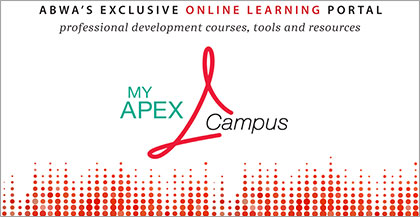
by Rene Street | Aug 22, 2024 | Uncategorized
Being present in today’s world is more difficult than it has ever been before. Everyone is constantly bombarded by emails, text messages, social media, news, advertisements, and all the other distractions of the modern world.
A lack of presence, especially in leadership, can often lead to poor communication, a lack of rapport with those around you, and volatility, uncertainty, confusion, and ambiguity in the workplace. One of the easiest ways to solve this problem is to understand and change the way you listen to those around you.
Most people don’t focus on or participate in listening in a way that actually makes a difference. Learning to truly listen and engage with whomever you are talking to enables connection, builds trust, and elevates flow across the board. When you strengthen your ability to listen, you become a better communicator. When you level up your ability to hear, you show up as somebody who is more open to feedback and who appreciates the contribution of what others are thinking and feeling. Upleveling your listening begins first and foremost with understanding what, how, and when you aren’t really listening.
Listening from Obligation
When this happens, there is little to no effort from the listener, either due to various distractions or a lack of caring about what the speaker has to say. Common behaviors when you’re listening at this level are multitasking, such as playing on your phone or scrolling through emails when someone is talking to you, tuning out/daydreaming, and anticipating what you think they are going to say and interjecting words for them. This kind of listening makes it impossible to develop rapport.
This level of listening also includes pretend listening, where you are not paying attention to the speaker, however you still act as though you are listening. The listener’s brain is paying attention to other things, but they are maintaining involvement in the conversation. Think of sitting next to someone very talkative on the plane or talking on the phone with a chatty family member. You aren’t absorbing or understanding the information the speaker is sharing.
Listening from the Inside
This is selective listening or downloading. In this level, you are only listening for what someone else is saying to confirm facts you already believe to be true. You are listening inside of your existing context. You parcel out information that you perceive to be uninteresting, lacking in value, or that doesn’t conform to your biases and preconceived notions. This level of listening is problematic because you only hear what you want to hear. When you listen this way, it’s all too often to brush feedback aside and/or filter it out altogether.
You know you’ve been listening like this when you come out of a conversation and everything you expected to happen happened. This type of listening is all about you. Your purpose in listening is to validate yourself and invalidate another if they disagree with you. There is no freedom and nothing new will be created in this kind of listening.
Listening for New Information
This level of listening is about seeking new information, new data, and new perspectives. It’s listening to learn. However, you are still listening for what’s in it for you. You’re not curious, but listening to gain knowledge or get something out of the listening. You are taking what you already think and building upon it.
At this level you are open to hearing something you haven’t heard before. You have some new data points and information that challenges your assumptions. Perhaps it exposes some new content or new reality to you. Here, you can actually walk away from the conversation with a memory of what was said and how it changed your perception. You leave the conversation thinking new things or in new ways.
Listening with Curiosity and Compassion
In this level of listening you are really connecting to the other person. You’ve got an empathic, emotional connection. This is when you’re listening soul to soul, heart to heart, and seeing the experience through another person’s eyes. You’re not only challenging your own assumptions, but actually considering that the other person’s reality is valid. You get to experience that person’s experience. Most one-on-ones should be done with this empathic, emotional connection. You’re letting go of your agenda and having an open mind and heart, building trust, and deepening your relationship with this person. You’re curious.
This is when you are fully engaged and focused on the speaker’s words and what those words mean to you and to the speaker. Nothing distracts you from the person with whom you are speaking. They have your full and undivided attention and it is clear to them that this is so.
Listening for What’s Possible
This level of listening is generative. You have moved beyond any friction and are completely immersed in flow. Everybody is participating. You both are in service of something bigger than the agenda and listening with an open will. In this level, you aren’t just listening to the person, but acknowledging the future that wants to be created. This is where innovation happens. This is where the collective genius is not just tapped into, but realized. This is the highest and most meaningful level of listening and is where you want to spend as much time as possible.
Listening at the Highest Level Every Time
We all need diverse opinions and viewpoints. When you listen from the lower levels of listening, which is not really listening at all, you miss out on so much, from critical information and feedback, to a chance to develop rapport with your team, a loved one, or even a total stranger.
The most effective leaders all excel at listening from the highest level. They make people feel valued, respected, and understood. They are also always honing their skills and becoming better listeners. They continually work on opening their mind, heart, and will. It’s a continual process of evolution. They are present and focused on whatever or whomever is in front of them. Meaningfully listening to those around you enables you to elevate yourself as a leader, build trust and rapport, and empower the people you’re listening to. Evolving your leadership and achieving optimal results begins with listening.
About the Author:
Margaret Graziano, known as the Evolutionist, is the founder and CEO of KeenAlignment, as well as a Wall Street Journal Best-Selling Author for her book “Ignite Culture.” She has been recognized as one of Silicon Valley’s Top 100 Women Leaders. Magi’s groundbreaking work is driven by her power to uncover and catalyze human potential. Go to www.MargaretGraziano.com for more information.

by Rene Street | Apr 30, 2024 | Blog, Business, Uncategorized
Burnout is impacting every industry, company and role. There are no exceptions. Leaders often find themselves in the trenches, navigating through the chaos, and driving their teams towards success. However, amidst the pursuit of goals and objectives, there’s a lurking enemy that can undermine all efforts – burnout. In the burnout battle, we often find the great divide.
Leaders believe that their employees aren’t being impacted by burnout or that their people have everything they need to beat it. Yet, employees are struggling in the day to day and believe they don’t have the strategies, tools or support to help them. We call this the burnout gap (the distance between what leaders think and how employees feel).
Much of the burnout battle, begins with educating leaders not only on the importance of burnout but also the urgency of it, because burnout won’t go away on its own or work itself out. You must be intentional and strategic as a leader and organization to prevent it. Our research has uncovered two components of burnout: the company and individuals. More specifically, a company’s culture and an individual’s habits. If one of these is misaligned it will lead to burnout. Your organization might have a wellness program, but that solely focuses on what employees can do to prevent or beat burnout in themselves, so it leaves out almost half of the contributing factors for burnout.
In other words, if employees work through a wellness program, they will still be headed toward burnout, because it doesn’t incorporate the company side of the contributing factors to burnout. For leaders, preventing burnout is no longer a nice to have, it’s a must do. Here’s why it’s crucial for leaders to take proactive measures to prevent and combat burnout within their teams, along with microstep, a small action leaders can take for massive results.
Burnout Kills Productivity
Burnout doesn’t just sap employees’ energy and enthusiasm; it also wreaks havoc on productivity. Exhausted and disengaged workers are far less likely to perform at their peak, resulting in missed deadlines, more mistakes, and decreased efficiency. The detrimental outcomes often can lead to safety issues and enhance cybersecurity attacks. When leaders fail to address burnout, they inadvertently sabotage their team’s performance and jeopardize the organization’s bottom line.
Microstep: Find one way to acknowledge or appreciate your people at least on a weekly basis. When employees get recognition six times a year (once every other month), performance increases by 32%, according to WorkHuman. Imagine if they received recognition weekly how much their performance would increase.
Burnout Breeds Disengagement
A burned-out workforce is a disengaged workforce. When employees feel overwhelmed and undervalued, their commitment to the job dwindles, and they become more prone to absenteeism and turnover, which costs U.S. employers $300 billion annually due to burnout. Leaders who turn a blind eye to burnout risk losing their top talent to competitors and creating a toxic culture of apathy and discontent.
Microstep: Address the elephant in the room and start talking about burnout. When you talk about burnout, employees lean in and become engaged, knowing that you’re creating a safe place where they will be met with compassion, empathy, and understanding. They recognize their work community is operating on the same foundation on which they can all build and thrive.
Burnout Undermines Creativity and Innovation
Innovation thrives in environments where individuals are energized, motivated, and encouraged to think outside the box. Unfortunately, burnout stifles creativity and dampens innovation. Exhausted minds lack the clarity and focus needed to generate fresh ideas and problem-solve effectively. By neglecting to address burnout, leaders inadvertently stifle their team’s creativity and hinder their organization’s ability to adapt and thrive in a rapidly evolving marketplace.
Microstep: Encourage frequent breaks. You people are most productive when you work for 50 minutes and take a 10-minute break. Instead of pushing through to finish a project or a task, give their brains the time and space to unwind and decompress. When they get back to it, they’re more creative and innovative and are able to finish things faster by taking that much needed break.
Burnout Damages Health and Well-being
Beyond its impact on productivity and performance, burnout takes a significant toll on employees’ health and well-being. Chronic stress and overwork can lead to a host of physical and mental health issues, including anxiety, depression, cardiovascular problems, and weakened immune systems. Leaders who prioritize the bottom line over their team’s well-being not only jeopardize individual health but also incur long-term costs in terms of healthcare expenses and employee morale.
Microstep: Implement more fun into the work days. Fun and work aren’t mutually exclusive. The more fun employees have at work, the more they will stay at the company. Fun shows up in different ways for people. Trivia, contests, ropes courses, or karaoke—ask them what they like to do for fun and then do it.
Burnout Leads to Leadership Failure
Ultimately, leaders bear the responsibility for the well-being and success of their teams. Failing to address burnout is a failure of leadership. Leaders who ignore the warning signs of burnout, or worse, contribute to its proliferation through unrealistic expectations and poor management practices, risk damaging their reputation and undermining their credibility as effective leaders. The ability to recognize, prevent, and address burnout is a fundamental skill that separates great leaders from mediocre ones.
Microstep: Do a two-word check in. Ask your team, “How are you really feeling,” and don’t allow them to say, “Fine.” Inspire them to tap into other feelings. When they say anxious, stressed, depressed, sad, hesitant or words like these, it’s an opportunity to dive into a deeper conversation and ask, “How can I help,” which lets them know you care about them as a real person and not just a worker.
The battle against burnout is more critical than ever. Leaders who prioritize the well-being of their employees and take proactive steps to prevent and combat burnout are not only fostering a healthier and more engaged workforce but also safeguarding the long-term success of their organizations. By leading by example, cultivating a supportive work culture, and promoting life-work alignment, leaders can empower their teams to thrive under any circumstance. Remember, the fight against burnout begins at the top – and it’s a battle worth waging.
About the Author, Jessica Rector
Jessica Rector, MBA, author of the #1 best-selling “Blaze Your Brain to Extinguish Burnout” and nine other books, helps organizations, leaders, and teams Say Yes to eradicate burnout and enhance mental health. As a burnout trailblazer, her research is used in her consulting and speaking and often shared on her podcast, “The Say Yes Experience.” For how Jessica can help your organization and team, go to www.jessicarector.com

by American Business Women's Association | Nov 21, 2023 | Blog, Business, Business, Uncategorized
3 Ways To Keep Burnout From Spreading Like Wildfire
Burnout is impacting every company, position, and industry. With 90% of the workforce experiencing burnout in the last year, you can no longer afford to ignore this epidemic. It’s affecting teams, leaders, and the whole organization…even you.
Even if you’re not the one in burnout, it still impacts you.
Think of it this way. How do you feel the next morning when you don’t get quality sleep the night before? Grumpy? Groggy? Foggy? Impatient, irritable, unfocused? Lack of sleep impacts your perspective, attitude, how you respond to others, and how you react to situations.
The same thing happens with burnout. It doesn’t stay self-contained.
When a team member, let’s say Burnout Betty, has burnout, it impacts how she leads, communicates, listens, focuses, thinks, interacts, her behaviors, energy, mood and disposition.
It literally impacts everything. When one person is in burnout, it also trickles out to others, because burned out people burn others out.
Even if you don’t have burnout, you’re being impacted by it when someone else does or is on the brink of it. You have the power to do something about it. What can YOU do?
START A DIALOGUE—Begin talking about burnout is the best place to start. Even though burnout is rampant in the workforce, there’s still some stigma around it. People often fear, if they admit they have it, what will others think, do or say. Will my leaders think I can’t do my job? Will they take away responsibilities or will they lose trust in me?
If Burnout Betty (BB) isn’t focused, she becomes distracted, unproductive, and making more errors. She will do the same work multiple times, miss deadlines or forget to meet a client. Those are best case scenarios. BB will easily cut corners leading to cybersecurity attacks, safety issues and possible injuries.
When BB misses deadlines, makes mistakes, or has to redo work, how does that impact you? You might have to stay longer, do some of her work, or maybe your work gets pushed back waiting on her to get her part to you, which means missing dinner with your family, being absent at your kids’ activities, or not meeting your deadlines.
Lean into your storytelling skills. Share your burnout story with BB. When you were in it, what led to burnout in your life, and the strategies you implemented to move past it.
When people are in burnout, they tend to pull away and isolate themselves. When you tell your burnout story, they will start to engage. The more you talk about burnout, the more it reduces this stigma. In the process, you allow others who are experiencing it to not feel alone and to know that someone, somewhere gets it and understands. You create a safe place of compassion and empathy.
This lets others know it’s okay to feel burned out. You can still love your job and be burned out.
CREATE AWARENESS AROUND BURNOUT—Burnout doesn’t discriminate. It’s impacting your people. The more your team knows what to look for and what to do to prevent it, the less likely they will find themselves in it. Develop a keen eye, because you can’t change something you aren’t aware exists.
Since burnout impacts mental health, Burnout Betty is easily frustrated or irritable, making it harder to communicate or interact with her, because others don’t want her mood to affect them. One Burnout Betty, Negative Nancy or Toxic Tim can bring a dynamic team to a halt.
Talking to BB can leave the most positive person in a negative state, because she doesn’t listen or she’s in a bad mood. So, every conversation takes longer than it should, which means less time for you to tend to your daily tasks.
Build a task force of people who want to be the eyes and ears in your organization in regards to burnout. They can gather information, ask questions to BB and other team members, and start creating a strategy to combat this epidemic. Then take the information they gather, and do something now to help them prevent it.
This allows BB to know that she is being heard and understood and that she matters. One of the biggest qualities people want in their company is to know they matter. When BB knows she matters, she feels supported, knowing she will get the help she needs to combat burnout.
Hint: Time off is great, but vacation won’t cure burnout. Once you create awareness around it, share with your people day to day strategies that work to help alleviate burnout.
IMPLEMENT A BURNOUT PROGRAM—This is the key, fundamental element. Talking about it is a great beginning, but it’s imperative to do more. The only way to prevent and address burnout is to be intentional and strategic with it. Workplace wellness programs aren’t enough; 97% of them don’t specifically address or help with burnout, which is also why 80% of employees aren’t actively involved in wellness programs.
As a leader, you have to do your part to help your people with burnout. If you want long term results, your organization MUST implement a continual program (not a one and done) to help people like Burnout Betty with burnout and others to prevent it.
A long-term strategy is where the magic happens with burnout. Burnout is a slow crawl, and working through it is multi-layered. Whether it’s an online course, bootcamp or Train the Trainer certification, burnout training is no longer a “nice to have.” It’s imperative if your company wants to keep their top talent and create a happy, thriving workplace and culture.
The most successful burnout programs have these key components: accountability, support, encouragement, and Q&A.
Burnout doesn’t go away on its own. With most industries incurring staff shortages, it’s up to you, as a leader, to invest in your people if you want to keep them. Since the #1 reason why people leave organizations is due to burnout, it’s a huge opportunity for you to end the burnout epidemic by starting the dialogue, creating awareness and implementing a burnout program in your company. It’s a win-win for everyone. What will you do to help your people end burnout?
About the Author, Jessica Rector
Jessica Rector, MBA, author of the #1 best-selling “Blaze Your Brain to Extinguish Burnout” and nine other books, helps organizations, leaders, and teams Say Yes to eradicate burnout and enhance mental health. As a burnout trailblazer, her research is used in her consulting and speaking and often shared on her podcast, “The Say Yes Experience.” For how Jessica can help your organization and team, go to www.jessicarector.com

by Rene Street | Sep 16, 2023 | Blog, Business, Business
In an era marked by immense volatility and complexity, characterized by technological advancements, business consolidations, fierce competition, and economic fluctuations, you may find yourself in an unprecedented time of change. The aftermath of the pandemic continues to linger, with burnout, stress, and overwhelm persisting among individuals and teams. Amidst this tumultuous landscape, the challenge is this: How can organizations emerge stronger from the trials of recent years? How can they cultivate a culture that thrives, adapts, and responds effectively to the unpredictable? The answer lies in fostering an emergent culture – one characterized by change management prowess, response agility, and a positive environment with fulfilled employees.
Understanding Culture
When more than two people come together, whether as a couple, a family, or a company, they form a human system. Within this system, culture serves as the driving force or energy. Culture possesses the power to create and destroy, providing guidelines for interaction, conflict resolution, motivation, and progress. The objective of examining and shaping organizational culture is to channel the collective energy of individuals into a productive force – one that mirrors the synchronicity found in natural phenomena, such as the coordinated movements of a school of fish or flock of birds. This is called an emergent culture.
Influencing Culture
Effective impact on company culture entails understanding and influencing the energy inherent within the human system. To initiate this process, focus on the following areas:
Start With The Leader
All culture begins with the CEO; the leader of the organization. What is their vision? Who are they as a leader? What are their values? Are they operating and living congruent with all of those markers, no matter how challenging or stressful the circumstances may be? Having a CEO who can answer those questions clearly and can live in alignment with them consistently is the foundation on which a company’s culture gets built. If the CEO is frazzled, overwhelmed, and in survival mode, that is going to set the tone for the entire organization. Whatever energy the CEO brings to the company and to their life will be the energy that other people pick up on and assimilate to in order to fit in and make it.
Thus, the CEO must be conscious. They must be awake and aware of what they’re emanating through their words and their actions. They must ensure that they have a clear vision, bolstered by positive moods and inspiring language that rallies people around their vision and engages them into action. Human systems are guided by behaviors, beliefs, actions, what’s said, what’s unsaid – all of that equates to the energy of the human system, and energy is culture. So, what kind of culture is the CEO creating?
Cultivate the Leadership Team
The leadership team further propagates cultural attributes throughout the organization. Behaviors exhibited by this team tend to cascade down to various departments. Similar to the CEO, leadership must demonstrate consciousness and accountability for their actions. This includes acknowledging their role in shaping the culture and undertaking personal growth to support a healthy, high-performance human system. By focusing on the following key elements, the leadership team can contribute to a thriving culture:
- Achievement. The company knows what they’re here to do, why they’re doing it, and how they’re measuring it. Organizational achievements are individual achievements, and vice versa. Achievements are specific, measurable, attainable results that are bound in time.
- Self-actualization. Each person is conscious. They know what their strengths and weaknesses are, and they’re responsible for them and the impact they have on others. They’re doing their own development and personal work just like the CEO is.
- Affiliation. People are partnering, collaborating, sharing ideas, and problem solving on an interdepartmental level. Cross-functional teams are committed to the noble cause and vision for the organization and are coming up with ways to problem solve together to fulfill the vision.
- Humanistic Managers. Managers authentically care about their people. They are aware of what’s going on in their employees’ lives, what their goals are, and how they want to grow. When an employee knows to their core that their manager has their best interests at heart and they want them to thrive, difficult conversations to improve performance can happen. Mentorship, coaching, and caring for people comes with humanistic management, and it supports employees who grow and thrive.
Assess Environment and Employees
Employee behavior provides insights into the prevailing environment. Key considerations include whether they experience autonomy, trust, and support in their roles. Ask these questions to assess the environment that your employees are navigating:
- How well do employees handle changes and upsets and challenges in the market?
- Do people feel the freedom and trust to share new ideas, take risks and have space to fail?
- Is there space in the time at work to ideate, innovate and co-create?
- Are the meetings inspirational and motivating or just a laundry list of getting things done?
- Is everyone clear on what the noble cause is?
- Is the right architecture or systems in place for people to work effectively together?
- Is the leadership team dismantling anything getting in the way of employees taking the ball and running with it?
- If there’s a problem, are the employees the ones to solve it?
- Are people being given the autonomy they need?
- Are people held accountable to their agreements and promises and measures?
- Can you have difficult conversations?
Achieving Resilience Through Emergent Culture
In times of uncertainty, organizations with the ability to adapt and pivot harness their power. Such resilience hinges on a healthy human system and a shared commitment to the company’s purpose. Leadership needs to exemplify responsibility, optimism, and collaborative problem-solving across departments to overcome obstacles and realize the company’s vision. This approach cultivates an emergent culture, capable of navigating challenges effectively.
While creating an emergent culture demands considerable dedication, care, and focus, the rewards are boundless. With a culture founded on change management skills, response agility, and employee fulfillment, organizations can not only weather storms but also soar to new heights.
About the Author, Margaret Graziano
Margaret Graziano is the founder and CEO of KeenAlignment, as well as a Wall Street Journal Best-Selling Author for her book “Ignite Culture.” She has been recognized as one of Silicon Valley’s Top 100 Women Leaders. Magi’s groundbreaking work is driven by her power to uncover and catalyze human potential. Go to https://keenalignment.scoreapp.com to take KeenAlignment’s Culture Assessment and see if you have an Emergent Culture.

by American Business Women's Association | Mar 24, 2019 | Blog
Written by Executive Leadership Coach, Denise Louise Jeffrey
Whether pushing for promotion, bargaining for extra budget or trying to convince a client to get on board, negotiation is a necessary part of business life. Most of us aren’t born with this skill, but it’s well worth taking the time to conquer for the benefits that it can bring – from forging better business relationships to reaping great rewards… whatever they may look like for you. With insight from Executive and Leadership Coach Denise Louise Jeffrey, here’s how to influence your way to great negotiations and seal the deal:
BE PREPARED…
One of the most important things to do when negotiating, is to put in the groundwork before anything begins. A common combination, and a vain one at that, is to be overconfident but under-prepared. Always take time to put the research in, and make sure you know what you’re getting yourself into. If you know who you’re meeting, carry out some background research, perhaps familiarizing yourself with their role and career trajectory. Also educate yourself on the project at hand, so that you’re well positioned to address any questions that may arise, and provide answers backed up by cold, hard facts.
BE ATTENTIVE…
Being attentive takes on many types of meaning in negotiations. No matter who you’re up against, always take the time to listen and show that you’re taking on board what they say. This is a two-way street, and there needs to be a mutual respect and understanding for what one another wants from the meeting. But being attentive also means being observant of their behavior, and as Denise suggests, you should use this to negotiate “with an outlook of achieving different outcomes that could be acceptable for all, depending on the style of bargaining your counterpart pursues.” Being able to pay attention to and, recognize their tactics, is key. This leads us onto the final step
BE ADAPTABLE…
As Denise tells us, negotiation isn’t a one-solution situation, and what works for one person may not work for the next. Being able to adapt based on your negotiator’s behavior is a key part in increasing your likelihood of success in the transaction. According to Denise, you can do this through noting their negotiation traits, which have been broken down into four archetypal types: The ‘My Way or the Highway’ type, the ‘Sweet Talker’ type, and the ‘Devil’s in the Details’ type and the ‘Let’s Not Rock the Boat’ type. The key is to then meet them on their level, unless – and this is one exception to the rule – they are being inappropriate or aggressive, in which case, call them out for their unprofessionalism and part ways. Denise’s recommended negotiation approaches are tailored to each category.
Ultimately, the most valuable skill a negotiator can possess is “being able to adapt and negotiate in all styles – not just the one you are most comfortable with.” Being prepared, attentive, altering your behavior based on theirs, and adapting accordingly on the day, is what will give you the highest chance of the best possible outcome.








